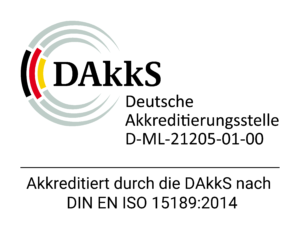The PPV reflects the rate of positive test results that are confirmed by chromosome analysis or after birth.
The risk of the presence of a fetal trisomy 21 during pregnancy is approximately 1:500 for the average population. Almost all of these cases are correctly detected by the Harmony® test (detection rate 99.3%[1.Stokowski R, Wang E, White K, Batey A, Jacobsson B, Brar H, Balanarasimha M, Hollemon D, Sparks A, Nicolaides K, Musci TJ.: Clinical performance of non-invasive prenatal testing (NIPT) using targeted cell-free DNA analysis in maternal plasma with microarrays or next generation sequencing (NGS) is consistent across multiple controlled clinical studies. Prenat Diagn. 2015 Sep 1]). However, if one in every 2500 Harmony® test result for trisomy 21 is false positive, this corresponds to a total of approximately every fifth (2500/500) positive trisomy 21 result. The so-called “Positive Predictive Value” (PPV) for trisomy 21 is therefore approximately 80% for a middle-aged woman.
Since the risk of trisomy 21 depends to a large extent upon the age of the mother, this must be included in the calculation of the positive predictive value. For a 40-year-old woman with a risk of approximately 1:100 of giving birth to a child with trisomy 21, only one in every 25. (2500/100) positive Harmony® test reports a false positive trisomy 21, thus the PPV of approximately 97% is correspondingly high.
The following Figure explains the calculation:

By comparison: the PPV of traditional first-trimester screening is only approximately 5 – 7%. This means that only 1 out of 18 abnormal results are confirmed by an invasive diagnosis; in 17 out of 18 cases, traditional first-trimester screening leads to an unnecessary invasive intervention with the risk of a miscarriage.


